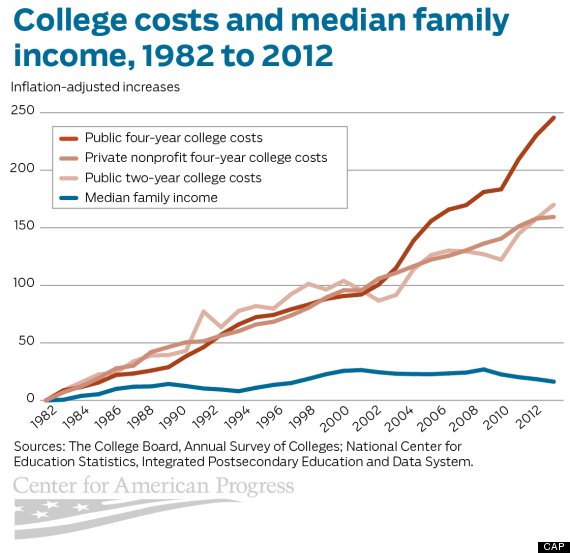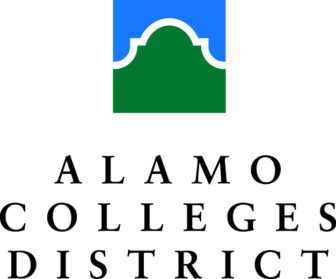My oldest daughter began 9th grade which means I have entered the parental demographic officially known as: “Sweet Mother of Mercy How Does Anyone Afford To Pay For Their Kids’ College?”

Some of my parent friends will only join this important parental demographic when their own kid enters 12th grade. But I’m precocious and forward-thinking about money. So I expect to breathe deeply into this paper bag here, continuously, for the next four years.
Against what seems like unrelenting bad news about the rising cost of college education comes a new trend from cities and counties with a seemingly radical, yet practical, idea: What if community college – an Associates degree or the first two years towards a Bachelor’s degree – were free?
A Trend In States, Counties
In Texas, Dallas County Community College District first began a “Promise” program a few years ago to low- and medium-income families. The “promise” is that they could access “last dollar” funding to make college affordable, or even free. That means that after Federal and State tuition grants, for qualifying families the Dallas Community College District would promise to make up the difference. Two years of college in Dallas is suddenly affordable and free.
Dallas enrolled their first cohort in the Fall of 2018. Eric Ban, the Managing Director for Dallas Promise, reports a 35% uptick in Dallas Community College District enrollment following the rollout, a higher retention rate from one semester to the next, and a 6% increase in enrollment by students from the highest poverty high schools in Dallas County.

Dallas County was early onto a nationwide trend. David Deming, in his recent article for the New York Times “Tuition-Free College May Cost Less Than You Think” argued that shifting already-existing federal resources can make post-secondary education much more broadly affordable.
Free community college is not a small experiment happening in a few cities, but a nationwide trend. Dallas’ Eric Ban says his program is working with other major cities in Texas, including Houston, Fort Worth, and Austin.
In my city of San Antonio, we’re about to learn whether leaders can achieve this radical yet practical mission of making the first two years of college free. Dr. Mike Flores, Chancellor of Alamo Colleges District, has studied the Dallas County example as well as trailblazers in Knoxville, Tennessee. His Alamo Promise plan aims to boost college enrollment and college completion rates while providing this gap funding to families that need it.
The really shocking financial number, based on the Alamo Promise presentation, is how affordable this program is for cities and counties. Year 1 would cost city and county budgets just over $300,000. Even fully ramped up by Year 5, the Alamo Promise program would cost $7.5 million in city and county funds, while serving an additional estimated 6,350 students.
For those of you at home who are quick at math, you’ll notice the net local public cost per additional student is just over $1,100. What fresh financial wizardry is this? That seems way too low!
The Surprising Affordability
I’ll let you in on the magic trick. The Alamo Promise plan – like the Dallas and Knoxville plans – leverages federal and state dollars to the maximum. It pays for the ‘last dollar’ needed by families, who will have already qualified for up to $6,000 in federal Pell grants and Texas Public Education Grant (TPEG) money. By doing this, the community colleges can legitimately tell prospective high school graduates: College is free. Please apply.
San Antonio Mayor Ron Nirenberg says the city supports Alamo Promise.
Says Nirenberg, “the plans we are working on are to identify funding that will be sustainable and allow Alamo Promise to be perpetual. It will take commitment from the public and private sector, but even at full flight, its relative expense is pennies compared to investments we made as a community routinely.”
A key point of announcing free community college in Dallas and San Antonio and other cities is clearly signaling. Specifically, they are sending a message to low- and middle- income families that funds are available, that this is doable, and that the city and county and the community colleges will make up a family’s funding gap.
A major barrier to a college education – likely the biggest barrier – is money. And by money, I actually mean in at least two ways: First, the reality, and next the perception.
The reality is that a four-year college education has become incredibly expensive to pay for, either outright, or through crushing student loans.
Perception also matters because high school students, and just as importantly parents, look at the stated price of college and just give up early because of the money.
My kids’ public school district, one of the target districts of the Alamo Colleges proposal, scored graduates at 34% “College Ready” according to the Texas Education Agency in the 2017-2018 school year.
Part of improving these rates is that high school graduates need to see a viable financial path to enrolling in and graduating from college.
Ban, Flores, and Nirenberg all describe the Promise program as a workforce readiness investment. In Dallas, 37% of adults have a post-secondary credential, while 65% of jobs require one. Among Dallas County high school graduates, only 28% achieve a post-secondary degree. Clearly, there’s a need to improve completion rates from an economic development perspective.
San Antonio’s Nirenberg says, “Whether or not San Antonio competes in that 21st century landscape depends on ensuring our workforce is a capable and available workforce, equipped with skills to meet the demand of the jobs we seek to grow and attract.” Flores points to the lifetime annual boost of $9,400 per year in income for graduates who achieve a higher degree.
Clearly, as ambitious as free community college sounds, it is only the beginning. In an ideal world, a two-year Associates degree can be for many the stepping-stone to complete a four-year degree. Many higher-paid jobs require a four-year degree, but that aspiration may become within reach with this free on-ramp to higher education for families that wouldn’t otherwise consider it.
A version of this post ran in the San Antonio Express News and Houston Chronicle
Please see related post
Do you want to see something really scary?
Post read (124) times.




